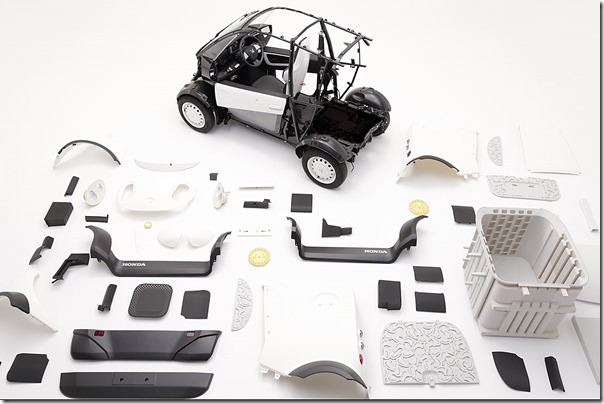Honda’s Sweet 3D EV
Everyone loves—and not necessarily in this order—3D printing, electric vehicles and candy.
#hybrid
Everyone loves—and not necessarily in this order—3D printing, electric vehicles and candy.
Well, maybe candy first.
Honda, working with Kabuku, a Japanese 3D printing startup, has created a short-range, micro electric vehicle for Toshimaya, a Japanese confectionery maker.

The vehicle has a chassis based on Honda’s pipe frame structure. Exterior panels and luggage space (or to be more specific, candy carrying space) were created with 3D printing.
The electric powertrain is based on Honda’s MC-β ultra-compact electric vehicle.
The printed car has a range of approximately 50 miles and a top speed of 43 mph.
The car is 98 inches long, 50 inches wide and 61 inches high. It weighs 1,327 pounds.

Toshiyama will use the vehicle for deliveries of its “Hato sablé,’’ a dove-shaped shortbread.
RELATED CONTENT
-
Audi and 3D
“Design is one of the most important buying decisions for Audi customers,” says the company’s Dr. Tim Spiering, who continues, “therefore it’s crucial we adhere to supreme quality standards during the design and concept phase of vehicle development.”
-
On the Genesis GV80, Acura MDX, BMW iDrive and more
From Genesis to Lamborghini, from Bosch to Acura: new automotive developments.
-
on lots of electric trucks. . .Grand Highlander. . .atomically analyzing additive. . .geometric designs. . .Dodge Hornet. . .
EVs slowdown. . .Ram’s latest in electricity. . .the Grand Highlander is. . .additive at the atomic level. . .advanced—and retro—designs. . .the Dodge Hornet. . .Rimac in reverse. . .


.jpg;width=70;height=70;mode=crop)






